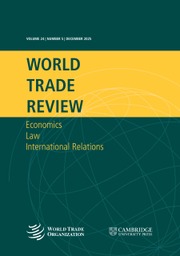No CrossRef data available.
Article contents
The Impact of ESG Gaps on Green Exports in Bilateral Trade: A Linear and Nonlinear Analysis
Published online by Cambridge University Press: 19 November 2025
Abstract
Drawing on unbalanced panel data with a maximum of 271,656 bilateral trade flow observations from 1996 to 2021, this study investigates both the linear and nonlinear influence of national Environmental, Social, and Governance (ESG) performance gaps on green exports. When the ESG performance of the exporting country exceeds that of the destination country, the results indicate that an increase in the ESG gap significantly stimulates green exports, and there is evidence that this stimulating effect is achieved by widening green innovation gaps. However, the marginal effect diminishes as environmental regulations in the destination country become more stringent. Conversely, when the exporting country’s ESG performance is lower, narrowing the ESG gap leads to an N-shaped relationship with green exports, which remains U-shaped after removing the extremes. This research provides empirical evidence and policy implications for the trade effects of ESG performance from a macro perspective, while supporting the rationality and necessity of the ESG concept.
Information
- Type
- Original Article
- Information
- Copyright
- © The Author(s), 2025. Published by Cambridge University Press on behalf of The Secretariat of the World Trade Organization.

